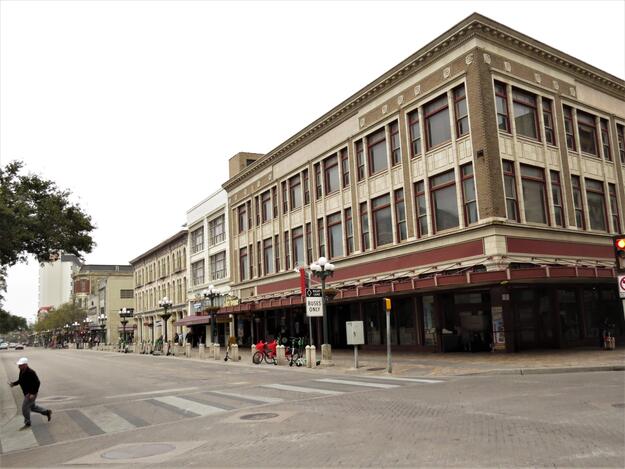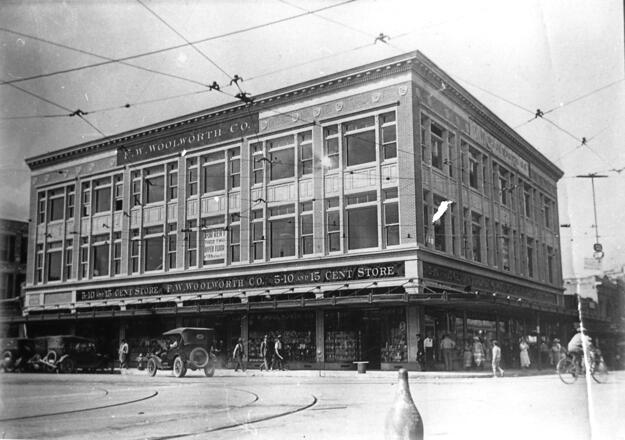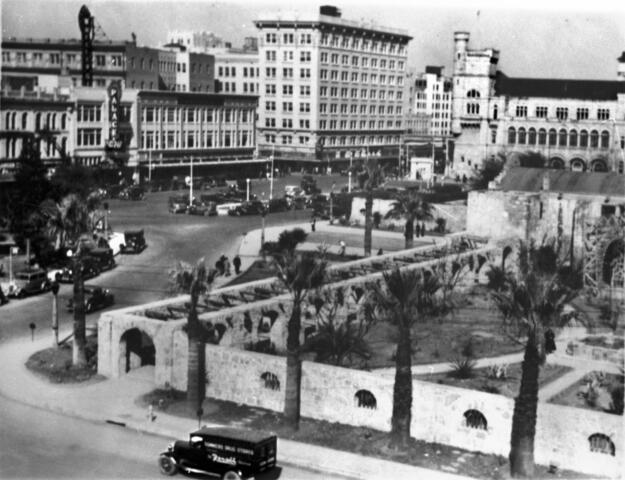San Antonio Woolworth Building
Site History and Significance
A Story to Be Told Around the World
On February 1, 1960, four African American college students staged a sit-in at a Greensboro, North Carolina, lunch counter as an act of peaceful protest of the F. W. Woolworth Company’s racial segregation policy. This non-violent demonstration faced a backlash of abuse from community members, including the Ku Klux Klan, and widespread criticism. As the sit-in continued, students organized a far-reaching boycott of stores with segregated lunch counters and spurred the sit-in movement in college towns throughout the South. These student-led peaceful protests were often met with violence from local authorities, arrests, and harassment. Nevertheless, this defiant act by the “Greensboro Four,” as they would be known worldwide, was the catalyst of the civil rights movement in the United States.
Woolworth's in San Antonio, Texas, made history on March 16, 1960, by uniting with six other local stores in peacefully desegregating their lunch counters. The city's interracial cooperation among church leaders, store managers, and members of the NAACP was credited with the achievement. Baseball legend Jackie Robinson called it "a story that should be told around the world."
An Underrepresented Landmark
Today, over 60 years later, the Woolworth Building's contribution to the civil rights movement has faded from public memory, due perhaps to its famous neighbor; the building anchors the northwest corner of Alamo Plaza, overlooking the historic mission where the Battle of the Alamo took place.
The Texas General Land Office owns the San Antonio Woolworth Building, which has partnered with local Alamo groups on a master plan to improve visitor experience at the plaza. A 2017 plan included repurposing the building into a museum that would tell the story of the Alamo. Still, a 2018 version excluded the building from site renderings, promising only to study the significance of the structure.
Our Involvement
2020 World Monuments Watch
Concerned preservationists, historians, and activists representing the community joined forces to advocate for preservation of the building, citing it as a visible link to Alamo Plaza's little-known African American history. They argued that together the Alamo and the Woolworth Building reinforce a richer, more inclusive historical narrative that extends from the 1836 battle to the civil rights movement of the 1960s, expanding the sites' cultural relevance to a more diverse audience.
The San Antonio Woolworth Building was included on the 2020 World Monuments Watch to encourage diverse participation in decision-making and reinforce the importance of spatial equity for heritage sites with underrepresented narratives.
San Antonio Woolworth Building Saved
In May 2021, a new conceptual plan presented by Bexar County Commissioners Court approved funding to rehabilitate the San Antonio Woolworth Building as part of the future home of the Alamo Museum. The new plan commits to preserving the memory of the events of March 16, 1960, through conservation of the building and an exhibition that places it within the larger context of America's struggle for civil rights.
Learn More
World Monuments Fund safeguards cultural heritage around the globe, ensuring our treasured places are preserved for present and future generations.
Sign up for our newsletter to receive regular updates on our projects, stories from the field, upcoming events, and more!



